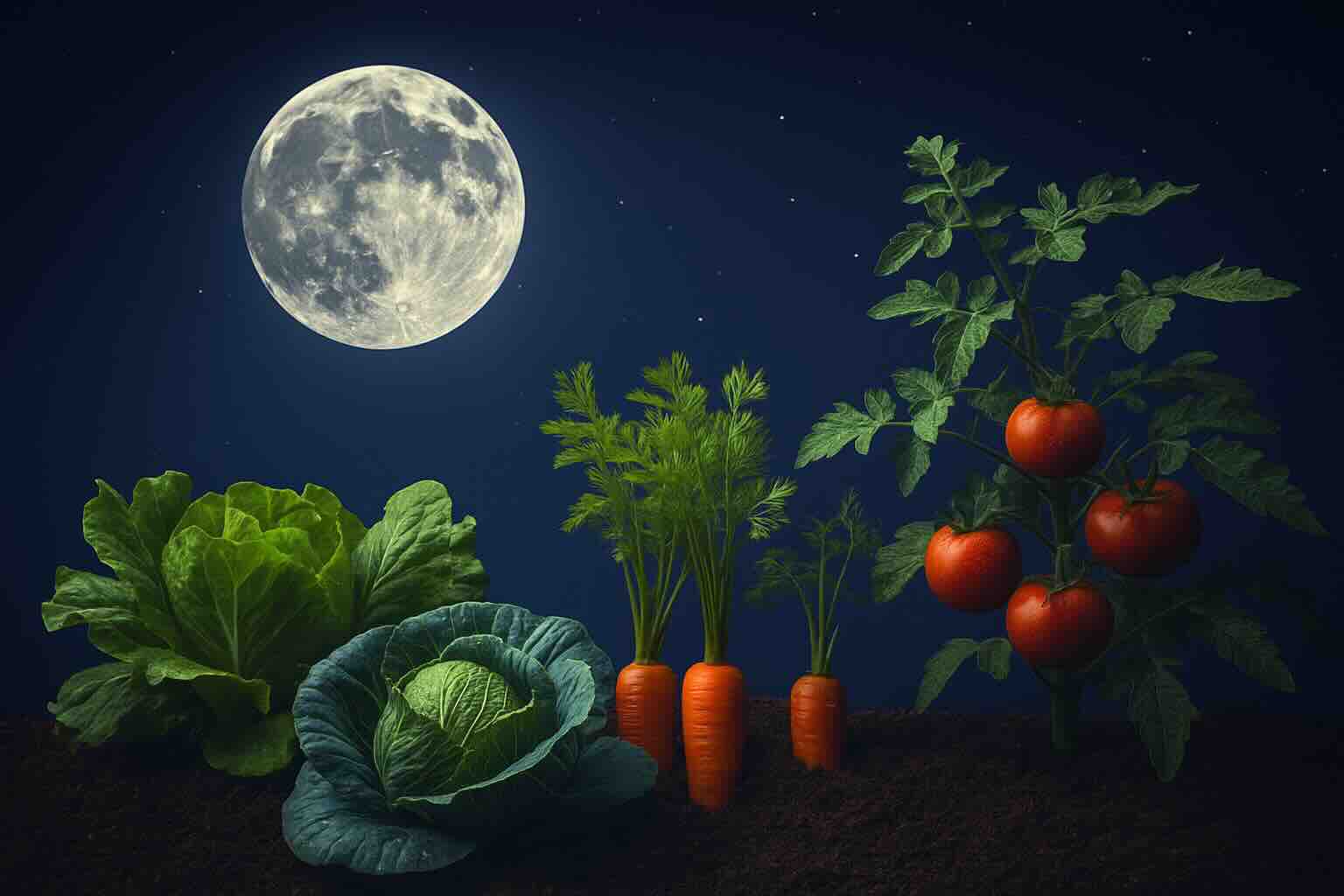For generations, farmers and gardeners have looked up at the moon before planting seeds. Moon gardening, an age-old practice, suggests that lunar phases influence soil moisture, plant growth, and even harvest quality. When it comes to vegetables, timing with the moon can make the difference between an average yield and a thriving garden.
Why Vegetables Respond to the Moon
The moon affects Earth in powerful ways. Its gravitational pull moves the tides, and gardeners believe the same force subtly impacts soil water levels. A waxing moon is thought to draw water upward, feeding leafy growth. A waning moon, by contrast, pulls energy downward, strengthening roots. While modern science has not fully proven these effects, centuries of practice and observation suggest a rhythm worth following.
Even if the moon’s influence is partly symbolic, planting by lunar phases encourages careful timing and observation—skills every gardener needs for success.
Waxing Moon: Leafy Vegetables Thrive
As the moon grows brighter from new to full, gardeners see it as a time of expansion. This is when leafy vegetables such as lettuce, spinach, kale, and cabbage thrive. Their above-ground growth benefits from the rising energy and extra soil moisture. Seeds germinate quickly, and leaves grow lush and tender.
If you want crisp lettuce for summer salads or nutrient-packed spinach for soups, sowing during the waxing moon is a tradition worth testing in your garden.
Full Moon: Fruiting Vegetables and Abundance
The full moon represents peak energy, a time when plants reach their most vigorous state. Gardeners traditionally plant or harvest fruiting vegetables during this phase. Tomatoes, peppers, beans, and cucumbers are said to benefit from the abundance of lunar energy, producing sweeter fruits and fuller harvests.
Some gardeners also believe that harvesting at the full moon improves storage life, as fruits and vegetables hold more vitality. Imagine pulling sun-ripened tomatoes from the vine under a glowing moon—it is both practical and poetic.
Waning Moon: Root Crops and Stability
As the moon fades from full to new, energy is believed to return underground. This is the best phase for root vegetables like carrots, potatoes, onions, and beets. Their growth focuses downward, enriching roots with density and nutrients. Gardeners who plant during the waning moon often report stronger, more flavorful harvests.
The waning phase is also ideal for weeding, pruning, and transplanting. With energy settling into the soil, plants recover more easily, and weeds are less likely to return after removal.
New Moon: Soil Care and Rest
The dark moon marks a pause. Traditionally, it is not a time for planting or harvesting but for preparation. Gardeners use this period to enrich the soil, compost, and plan new beds. The stillness of the new moon encourages reflection and patience—values that reward every gardener in the long run.
Some also use the new moon to save seeds or prepare fertilizers, symbolically beginning new cycles while the sky resets itself.
Scientific Insights into Moon Gardening
Modern science remains divided on the measurable impact of the moon on vegetable growth. However, research does confirm that plants respond to subtle cues such as light, gravity, and water availability—all factors the moon influences. The waxing and waning cycles also align with natural rhythms of plant metabolism and sap movement.
Even without definitive scientific proof, moon gardening encourages awareness. By planting vegetables with intention and rhythm, gardeners naturally care more for their crops, often leading to better yields.
Vegetable Gardening with the Moon in 2025
The year 2025 will bring several significant lunar events, including four supermoons and two lunar eclipses. Gardeners who align with the moon see these moments as powerful opportunities for planting and harvesting.
A supermoon in summer, for example, is considered an ideal time for planting long-season crops like pumpkins or squash. Lunar eclipses, though rare, are often associated with renewal and transformation—perfect for introducing new vegetables to your garden plan.
Practical Tips for Moon Vegetable Gardening
For those new to lunar gardening, here are some ways to get started:
1. Track the moon phases. A simple lunar calendar helps you align your planting schedule with the waxing and waning moon.
2. Match crops to phases. Leafy greens for waxing moons, fruiting crops for full moons, and root vegetables for waning moons.
3. Observe and adapt. Keep notes on how vegetables grow when planted in different phases. Over time, you’ll discover what works best in your local climate.
4. Blend tradition and science. Don’t replace scientific gardening knowledge, but use lunar timing to complement it.
Final Thoughts: A Lunar Boost for Your Garden
Moon gardening for vegetables is more than just folklore—it’s a mindful way to connect with your crops. Whether or not the moon directly affects plant growth, the practice teaches patience, rhythm, and observation. In a world where gardening often feels rushed, following lunar cycles brings balance back to the soil and to the gardener.
In 2025, as supermoons light up the sky, try planting your vegetables with the moon as your guide. You may find that your carrots are sweeter, your tomatoes juicier, and your garden more alive than ever before.
